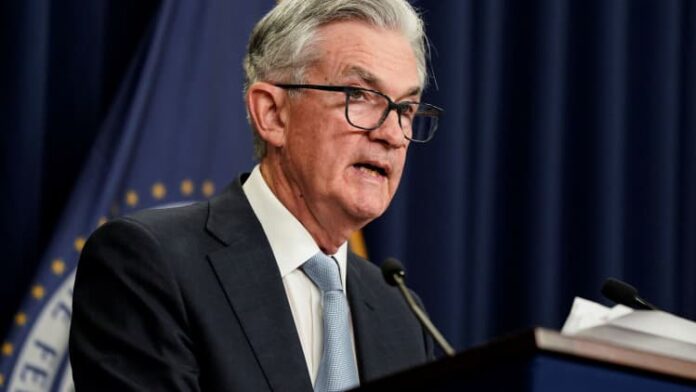The Federal Reserve hiked interest rates by 0.5 percentage point at the end of its two-day meeting on Wednesday in a bid to further cool inflation.
While that’s a more typical increase compared to the super-large moves of 0.75 percentage points at each of the past four sessions, the central bank is far from done, according to Greg McBride, chief financial analyst at Bankrate.com.
“In the coming months, the Fed will hike rates at a more usual pace,” McBride said.
More from Invest in You:
Only 12% of adults and 29% of millionaires feel “wealthy.”
35% of millionaires say they don’t have enough to retire
Inflation increases US household spending by $433 per month
The latest move is just part of a cycle of rate hikes aimed at bringing inflation down without plunging the economy into recession, as some might have feared.
“I thought we were in the middle of a recession at this point, and we’re not,” said Laura Veldkamp, professor of finance and economics at Columbia University Business School.
“Each time since World War II the Federal Reserve has acted to reduce inflation, unemployment has skyrocketed and we’re not seeing that this time and that’s what’s striking,” she said. “I really couldn’t think of a better scenario.”
Still, the combination of higher interest rates and inflation has hit household budgets particularly hard.
What the Federal Funds Rate means to you
The federal funds rate, set by the central bank, is the rate at which banks lend and borrow money from each other overnight. Whether directly or indirectly, higher Fed rates affect the cost of borrowing for consumers and, to a lesser extent, the interest they earn on savings accounts.
For now, many Americans are stuck as inflation and higher prices mean more people are leaning on credit just as interest rates are rising at the fastest pace in decades.
With greater economic uncertainty ahead, consumers should take specific steps to stabilize their finances — including paying down debt, especially costly credit card and other adjustable-rate debt, and increasing savings, McBride advised.
Pay off high-interest debt
Since most credit cards have a variable interest rate, there is a direct link to the Fed’s benchmark, so short-term lending rates are already rising.
According to Bankrate, credit card APRs are now averaging over 19%, up from 16.3% at the start of the year.
The cost of existing credit card debt has already increased by at least $22.9 billion due to the Fed’s rate hikes and will increase by another $3.2 billion with this latest hike, according to a recent analysis by WalletHub.
If you’re carrying a balance, “snag one of the zero percent or low-interest balance transfer deals,” advised McBride. Cards offering 15, 18 and even 21 months interest-free on transferred funds are still common, he said.
“This gives you a tailwind to pay off the debt and protects you from the impact of any further rate hikes to come.”
Otherwise, try consolidating and paying off high-yield credit cards with a lower-yielding home equity loan or personal loan.
Consumers with an adjustable rate mortgage or home equity loans may also want to switch to a fixed rate mortgage.

Because longer-term 15- and 30-year mortgage rates are fixed and linked to government bond yields and the broader economy, these homeowners will not be immediately hit by a rate hike.
However, the average interest rate on a 30-year fixed-rate mortgage this week is around 6.33% — more than 3 full percentage points up from 3.11% a year ago.
“These relatively high interest rates, combined with persistently high home prices, mean home buying is still a challenge for many,” said Jacob Channel, senior economic analyst at LendingTree.
The rise in mortgage rates since early 2022 has the same affordability impact as a 32% rise in house prices, according to McBride’s analysis. “If you got a $300,000 mortgage earlier this year, that’s less than $204,500 today.”
Anyone planning to finance a new car will also shell out more in the coming months. Similarly, although car loans are locked in, the payments grow larger as interest rates rise.
The average monthly payment climbed to over $700 in November, compared to $657 at the start of the year, although the average loan amount and average loan life stayed more or less the same, according to data from Edmunds.
“As the industry begins to see inventories improving so that buyers can actually find the vehicles they are looking for, interest rates have risen to the point that more consumers are faced with monthly payments they likely cannot afford.” . said Ivan Drury, Director of Insights at Edmunds.
Federal student loan rates are also fixed, so most borrowers are not immediately affected by a rate hike. However, if you have a personal loan, those loans can be fixed or have a floating rate tied to Libor, Prime, or T-Bill interest rates — meaning borrowers are likely to pay more interest when the Fed hiked rates, although how much more will vary by benchmark.
As such, this is a particularly good time to identify your outstanding loans and see if refinancing makes sense.
Buy for higher savings rates
While the Fed has no direct influence on deposit rates, they tend to correlate with changes in the overnight target rate and interest rates on savings accounts at some of the largest retail banks, which have been near bottoming out for most of the Covid pandemic. currently average up to 0.24%.
Thanks in part to lower overheads, the average interest rate for online savings accounts is closer to 4%, much higher than the average interest rate at a traditional bank.
“The good news is that if you look around, savers are getting their best returns in 14 years,” McBride said.
Even better than a high-yield savings account are high-yield certificates of deposit, which pay out between 4% and 5%.
And yet, because the rate of inflation is now higher than any of those rates, any savings lose purchasing power over time.
What’s next for interest
Consumers should brace themselves for even higher interest rates in the coming months.
Although the Fed has hiked rates seven times this year, more rate hikes are on the horizon as the central bank slowly reins in inflation.
Recent data shows that these moves are beginning to have an impact, including a better-than-expected November CPI report. However, inflation remains well above the Fed’s target of 2%.
“They’re going to raise interest rates now and into 2023,” McBride said. “The ultimate breakpoint is unknown, as is how long rates will remain at that ultimate destination.”
Subscribe to CNBC on YouTube.
Correction: A previous version of this story misrepresented the magnitude of previous rate hikes.















